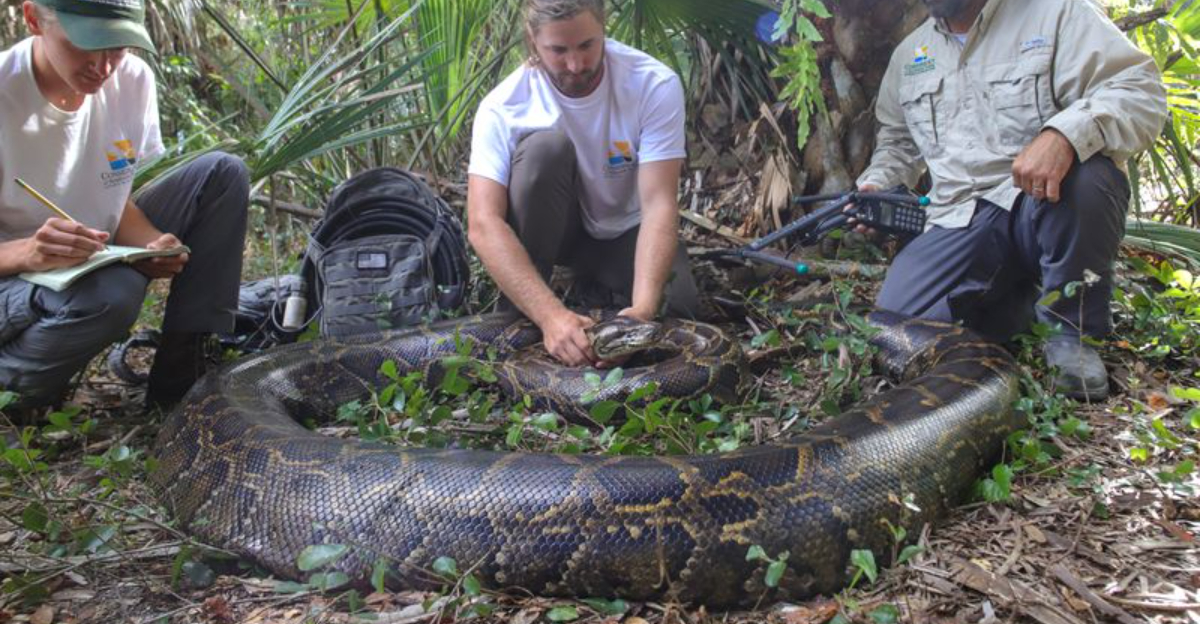When news broke about the record-breaking Burmese python found in Florida’s Everglades, it grabbed everyone’s attention.
This wasn’t just any snake—it was a massive creature that set a new record and brought even more focus to the growing invasive species problem in one of America’s most unique ecosystems.
The discovery was a clear reminder of the ongoing threats facing Florida’s wildlife, as these giant invaders continue to disrupt the delicate balance of the Everglades.
1. Record-Breaking Capture
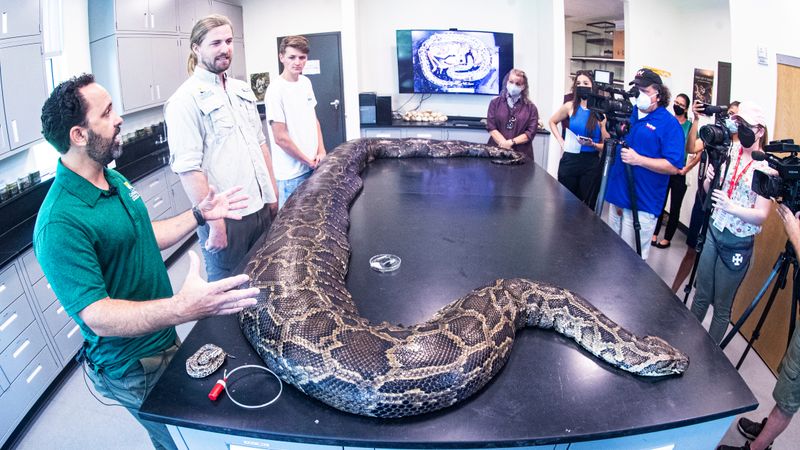
When researchers pulled this massive python from the murky Everglades waters, they couldn’t believe their tape measures. Stretching nearly 18 feet long and weighing over 200 pounds, this female Burmese python shattered previous state records.
I’ve tracked wildlife for years, but nothing compares to seeing these giants up close. The snake contained 122 developing eggs – another record – revealing why these invasive predators multiply so effectively in Florida’s swamps.
Scientists estimate she had consumed dozens of native mammals during her lifetime, including deer and even alligators. Her capture represented a small victory in the ongoing battle against these invasive reptiles.
2. The Glades Boys Team
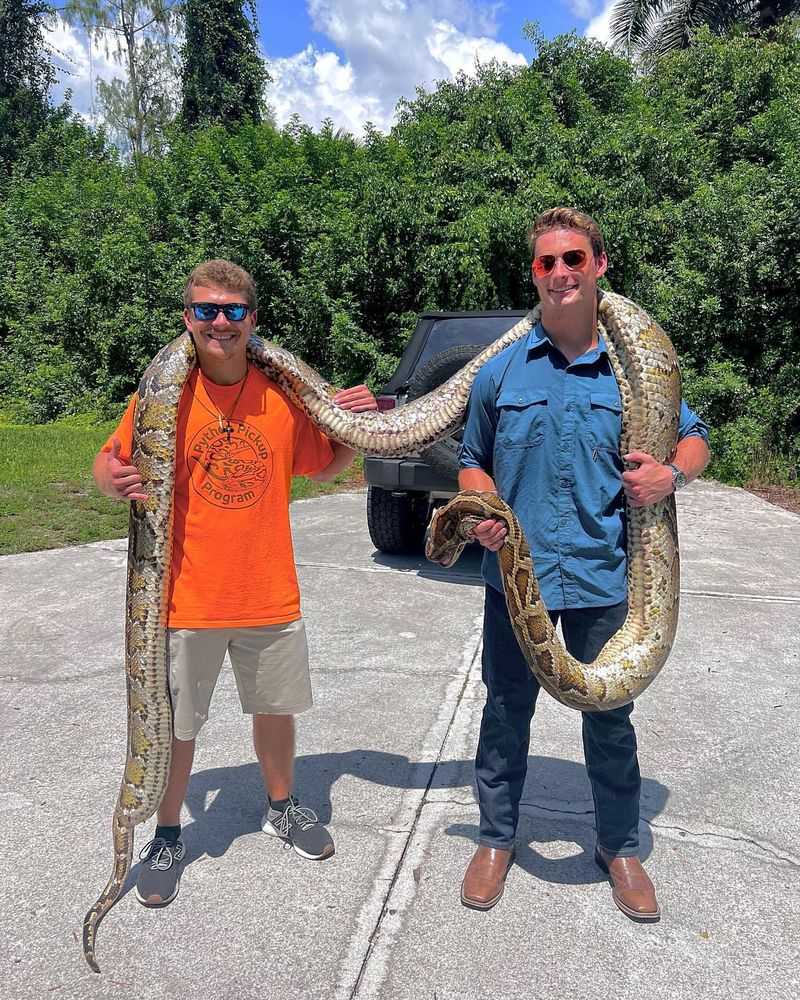
Meet the modern-day snake hunters who captured this record-setter! The Glades Boys team combines old-school tracking with cutting-edge technology to locate and capture these elusive predators.
Using everything from infrared drones to specially trained dogs, these dedicated conservationists brave mosquito swarms and challenging terrain to protect Florida’s ecosystem. Their techniques have revolutionized python hunting, making them the go-to experts for tackling the biggest specimens.
Most team members started as concerned locals who witnessed firsthand how pythons devastated native wildlife. Their expertise has become invaluable to scientists studying these invasive giants and developing better control methods.
3. Impact on Local Wildlife
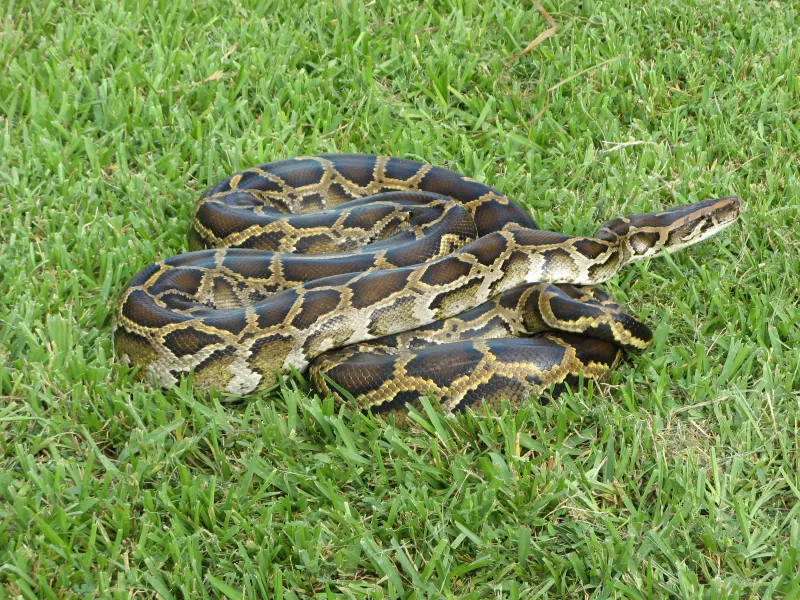
This massive python is a major threat to Everglades biodiversity. Since their introduction in the 1980s, these constrictors have wiped out local mammal populations by up to 90% in some areas. Raccoons, opossums, and marsh rabbits have practically vanished from python-infested regions.
Even alligators, the apex predators, aren’t safe – researchers have documented intense battles where pythons sometimes come out on top.
The effects go beyond just eating the animals; with fewer mammals to spread seeds and control rodents, the whole ecosystem is at risk of major disruptions that could permanently change this one-of-a-kind wilderness.
4. A Shocking Discovery
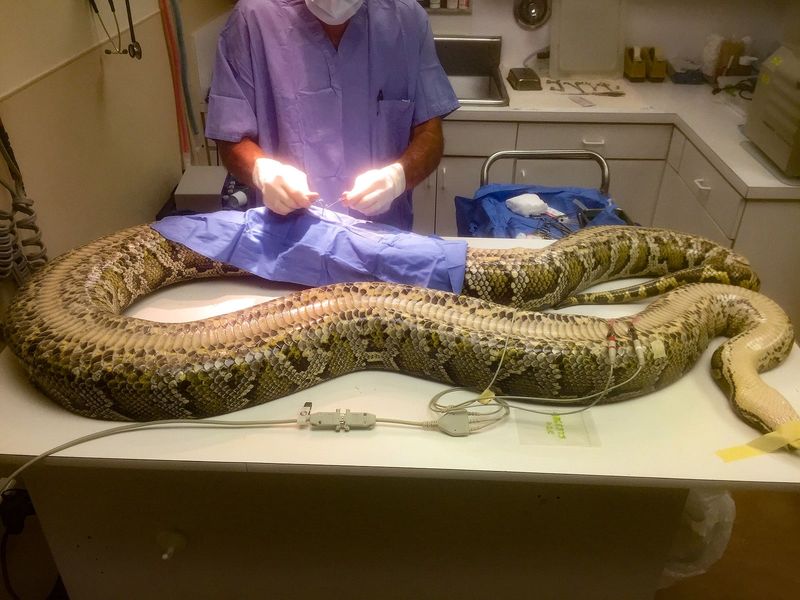
Near where they found the record-breaker, researchers stumbled upon something even more shocking – a writhing “mating ball” of pythons containing one massive female surrounded by eight competing males.
This reproductive behavior explains why python numbers explode so rapidly despite control efforts. A single female can produce up to 100 eggs annually, potentially adding thousands of offspring to the population during her lifetime.
Back in 2019, I joined a research expedition where we radio-tagged a female similar to this record-breaker. She led us straight to a mating aggregation that completely changed how we understand their breeding patterns and helped improve targeted removal strategies.
5. Conservation Efforts
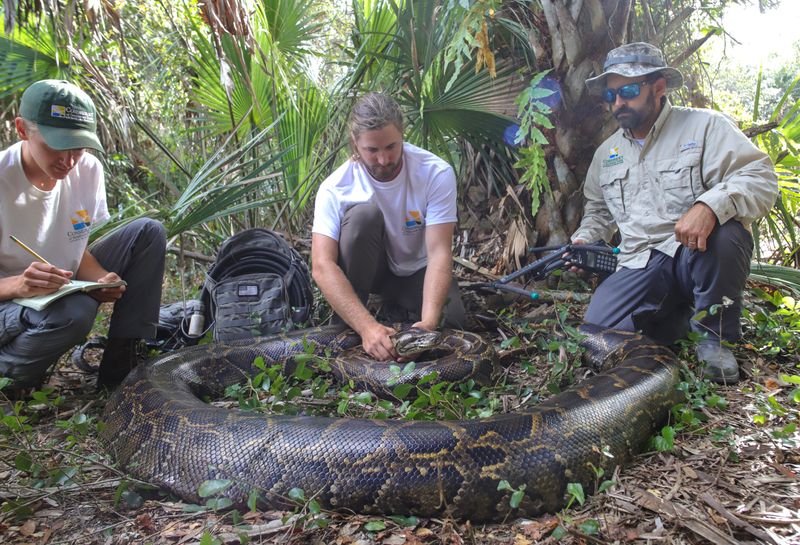
Florida fights back! The capture of this record-breaking python energized the state’s innovative Python Elimination Program, which pays hunters bounties based on length. Top catchers now remove hundreds of pythons annually.
Scientists extract DNA from captured snakes to trace their origins and movement patterns. This genetic detective work reveals how different python populations spread throughout South Florida and helps predict future invasion fronts.
What’s really fascinating are the new technologies being used to tackle the problem – from environmental DNA sampling that spots pythons in the water, to specially trained detector dogs that can sniff out these elusive snakes. Each giant captured provides valuable data that helps improve our chances of controlling this slithering invasion..
